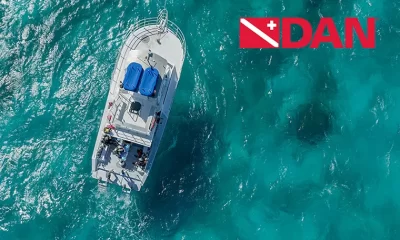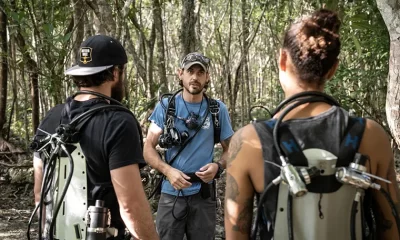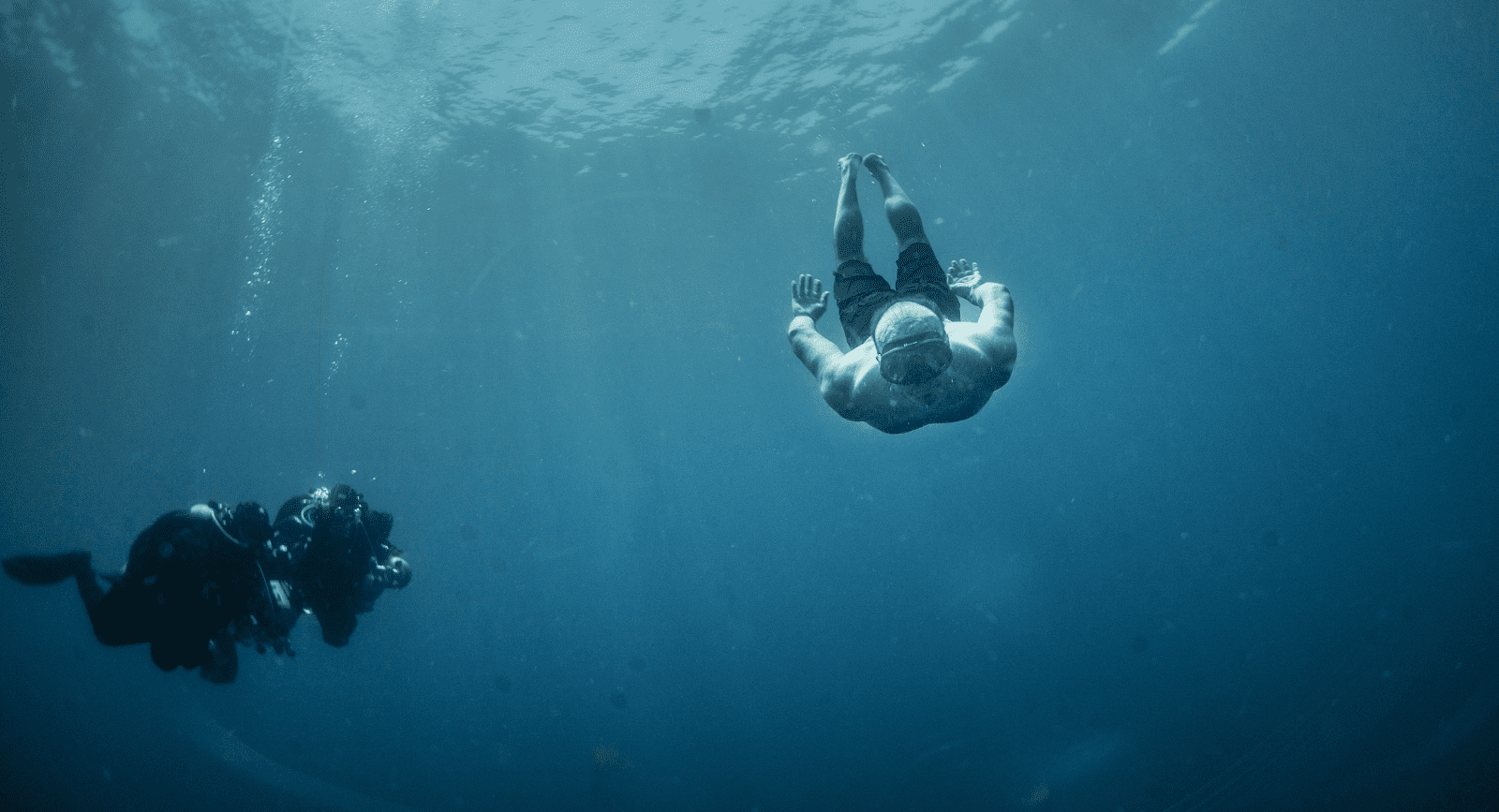
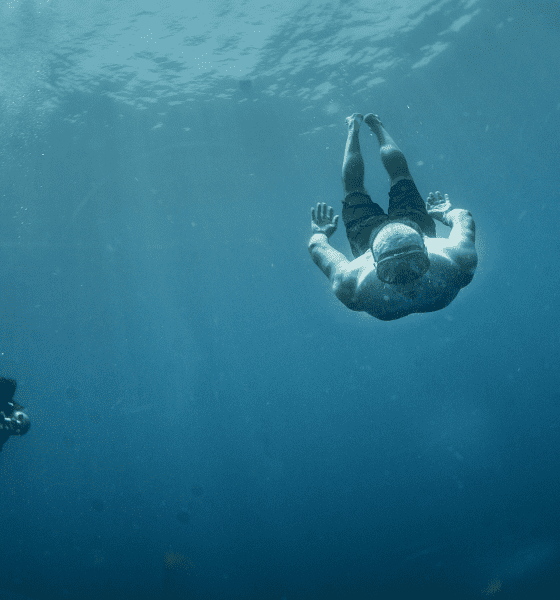
DCS
Should Tech Divers Be Thinking More About Equalization—Like Freedivers Do?
Compared to Frenzel equalization used by freedivers, Valsalva equalization can be hard on the ears and eustachian tubes, and could cause problems for tech divers with undetected PFOs. Here scuba instructor turned freediver Charly Stringer argues the case for Frenzel and greater equalization awareness. Community comments included.
By Charly Stringer. Header photo by Derk Remmers
Technical divers plan out their dives extensively before entering the water, they think of every small detail, from gas percentages to time limits.
Freedivers plan too, they plan how deep they will go in the session and they plan out their long term training goals. But, what freedivers focus on probably the most is equalisation. This is something that scuba divers rarely have to think about, but in freediving, bad equalisation can ruin a dive session and stop you in your tracks when trying to get deeper.
But, should technical divers be taking a leaf out of their bubble-less friends’ books and thinking more about their equalisation? What if I was to tell you that the way you’re equalising during a tech dive could affect your likelihood of getting bent?
Your first response might be: “Don’t talk crazy, what has equalising the ears got to do with decompression illness (DCI)?”
Good question, but hear me out…
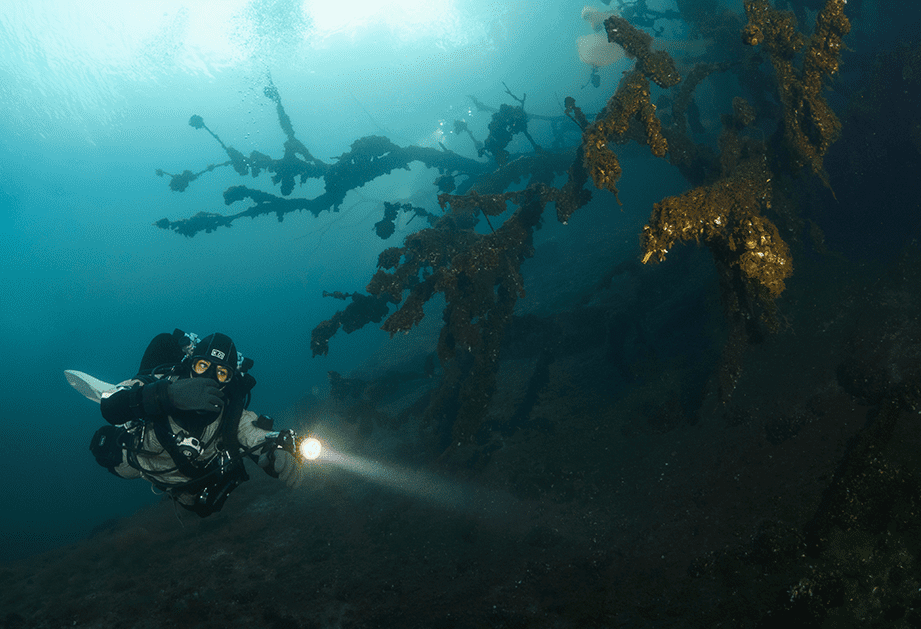
Equalisation techniques in freediving vs scuba diving
First, let’s explore the differences in equalisation techniques used by freedivers and scuba divers. Some people don’t know that there are different ways to equalise the ears and sinuses, it’s something they just do, without paying much attention to which body parts they are using. But actually, there are two main ways to equalise, and they are very different:
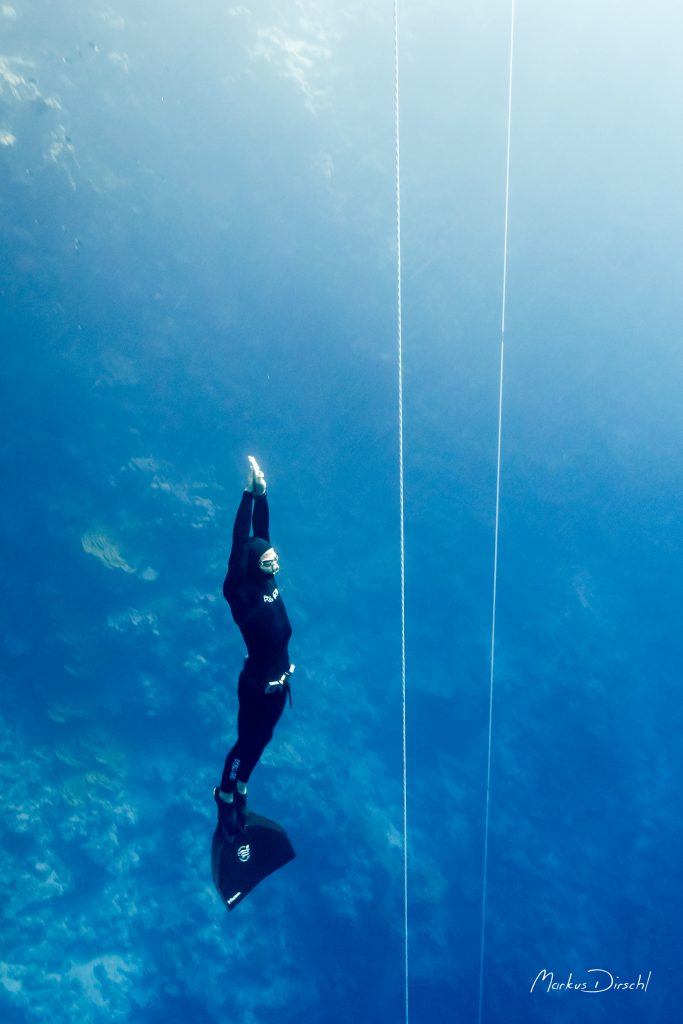
Valsalva:
The Valsalva maneuver involves blocking the airways and pushing with the abdominals to create enough pressure to equalise the ears. This technique can be quite forceful and can put strain on the respiratory muscles and the heart.
It is the most common equalisation technique with scuba divers and with beginner freedivers because it is the simplest to perform. For scuba diving, the Valsalva technique is adequate because the diver has time to stop, breathe, and take their time.
For freediving, however, Valsalva is not desirable for equalising the ears. Firstly, it’s not very relaxing because of how strenuous it is. Secondly, pressure increases as the freediver gets deeper, it becomes almost impossible to perform the Valsalva technique because it requires a good amount of air in the lungs to be performed. As the diver gets deeper, the air in the lungs compresses and therefore can’t be used to Valsalva, unlike in scuba where the diver can simply breathe more air to the lungs.
Valsalva can sometimes be ineffective as it doesn’t activate muscles which open the Eustachian tubes, so it may not work if the tubes are already locked by a pressure differential.
Frenzel:
The Frenzel maneuver is a bit more technical. It involves bringing air up into the throat, closing the glottis, and then contracting the throat. This creates pressure in the nasal cavity, which opens the eustachian tubes, and equalises the middle ear pressure. This technique is a little trickier but is much easier on the body, assuming that the diver can keep up with the descent. As all the work is done in the throat area, and it doesn’t require the lungs to be so full, it can be performed a lot deeper underwater. It’s also much easier to stay relaxed this way, making it perfect for freedivers.
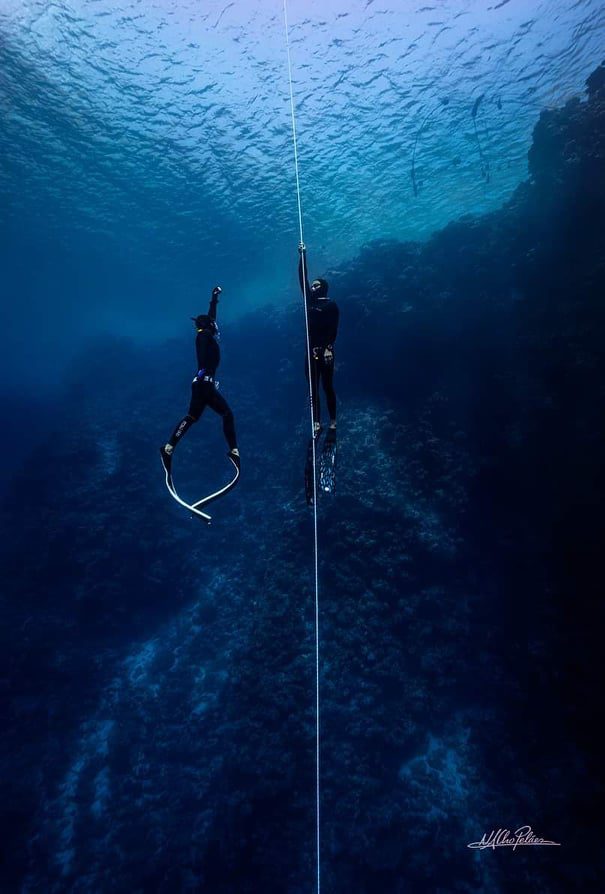
Some people will perform the Frenzel technique naturally, however it is less common. A lot of people who have scuba dived for many years, come to freediving with confidence that their equalisation will not be a problem, because they have been Valsalvaing successfully for all that time. As they have had almost unlimited air, and the luxury of taking their time to equalise before moving deeper, Valsalva has been good to them. But when your body has a history of autopilot Valsalva, it’s hard to break that habit when switching to Frenzel for freediving, and they can struggle.
So Frenzel has become the technique of choice for freediving. Many freedivers that want to improve, and get deeper in their diving spend hours practicing equalisation. Those that naturally Valsalva have to really create an awareness to switch over to Frenzel and for some people this comes very quickly, for others it can take time. There are coaches that specialise in teaching equalisation. This is something that scuba divers never really have to practice or focus on.
Decompression illness, Valsalva, and PFOs
We know that most tech divers are using Valsalva, and we know that Valsalva can put pressure on the heart. But could this be a factor in getting bent? Well, it could if they also have a PFO…
Patent foramen ovale (PFO) is a hole in the heart between the upper right and left chambers. This is something we all have while we’re in the womb, but for most people it closes up after birth.
Studies have shown that divers who suffer from decompression illness (DCI) have a PFO prevalence twice that of the general population, and most of those divers have a PFO that is a centimeter in diameter or larger.
You might be surprised to learn that over a quarter of people have a PFO, though in some cases these are small and not psychologically relvant. Most of which will never have symptoms, and it will never cause them any health issues. However, for scuba divers, the risk of getting DCI increases five to 13-fold (some researchers place this risk at closer to 3-5 times) by having a PFO because of an increased risk of inert gas shunting (bubbles moving from the right heart chamber to the left).
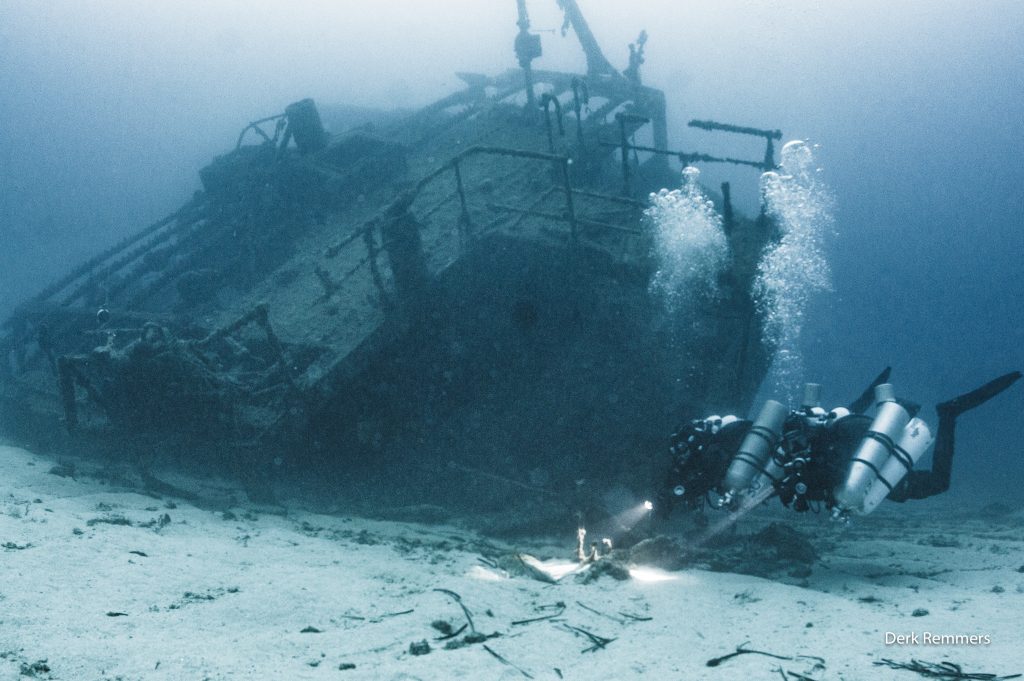
For recreational scuba divers that stick to their no decompression limits, the risk of DCI is higher with a PFO, but it’s still very low. However, technical divers have a higher risk of DCI because of the depths they are diving to and the amount of time in which they are staying at those depths i.e. greater gas loading. There is less room for error in tech; every detail needs to be planned out and stuck to… make a mistake and you’re likely to get into trouble.
So where does Valsalva come into play?
A study funded by DAN Europe on PFOs and decompression sickness in sport divers found that divers who suffered cerebral DCS (in which a large number of grade 2 PFOs were found) frequently induced sustained and severely strained Valsalva maneuvers to equalise their ears whilst diving. Of course, since Valsalva is the most commonly used equalizing technique for scuba, there are likely many divers are using it without incident.

A PFO can be determined by using something called a “bubble study”. During this study the physician will inject the patient’s vein with air and get the patient to perform the Valsalva maneuver. This raises the pressures in the right side of the heart and will show bubbles in the left atrium if the patient has a PFO.
So the fact that they are using the Valsalva technique to prove that a patient has a PFO by deliberately pushing bubbles through it, is a possible indication that we shouldn’t be using it at depth; because we know that inert gas being shunted through the PFO causes a higher risk of DCI when diving. [Ed.note: However, bubbles more likely to form on ascent not at depth]
So, it seems that the way tech divers are equalising could actually be a risk factor to consider when it comes to preventing DCI.
Preventative Measures
Based on the knowledge that over a quarter of people have a PFO and that most don’t know that they have one, we can assume that over a quarter of tech divers have a PFO, and may not find out until they potentially suffer from DCI in cases where they are psychologically relevant. Few divers will likely consult their doctor to check to see if they might have a PFO in the absence of symptoms.
So, what could tech divers do to reduce the risk of getting DCI, in addition to planning their dives extensively and diving conservatively? They could switch their equalisation technique from Valsalva to Frenzel as a preventative measure. There are really no negative points to switching over: Frenzelling is easy when you get the hang of it, it could potentially lower your risk of DCI, and has other benefits too, such as being gentler on the ears, conserving more energy, and requiring less air to perform.
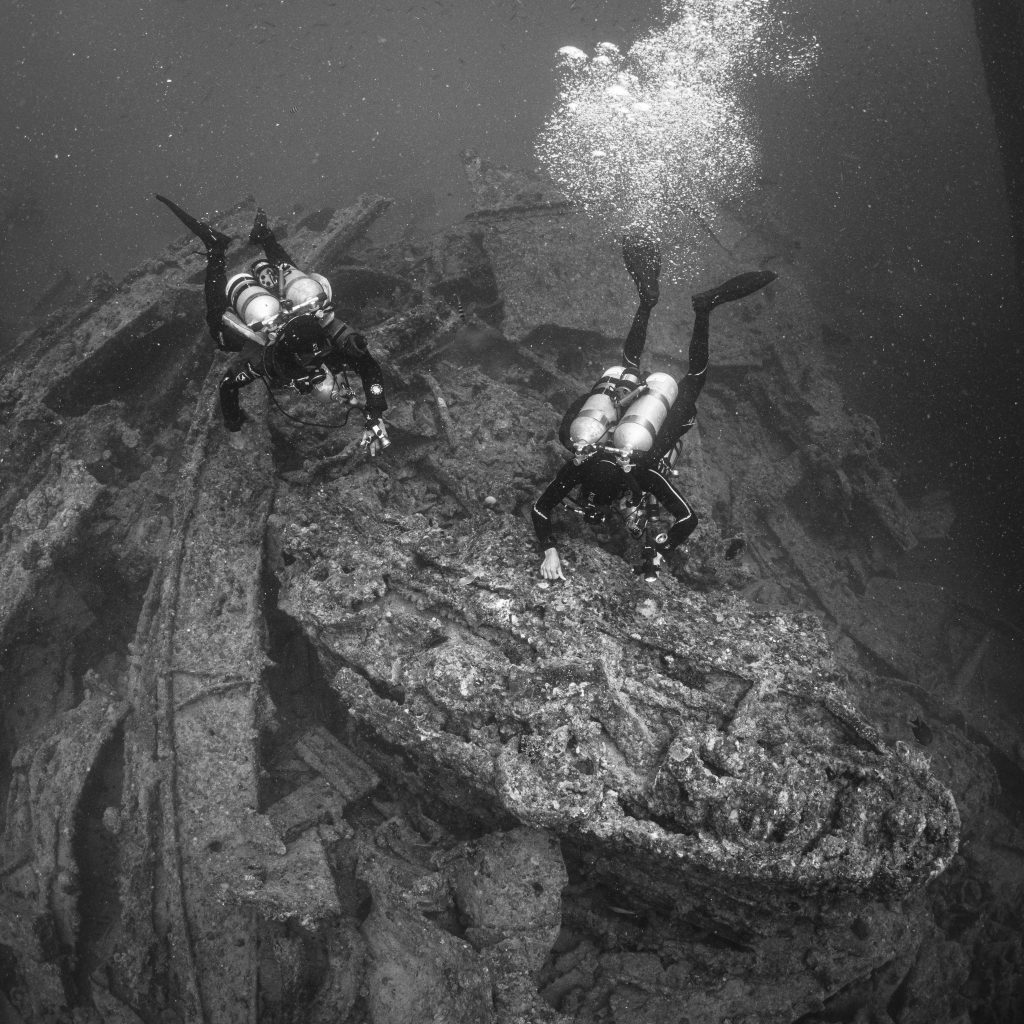
To be clear, I am in no way suggesting that switching to Frenzel is circumvent to surgical procedures if you do have a PFO. If you know that you do have one, you should follow your doctor’s advice when it comes to diving.
As mentioned earlier, there are freediving coaches that specialise in teaching people how to Frenzel, as well as Youtube videos and articles. With some practice, Frenzel can become the new autopilot equalisation when diving, causing a lot less strain on the heart and therefore, reducing the risk of getting bent.
Comments from The Field:
We asked a few people we thought were knowledgeable to respond to Charly’s piece. Here is what they had to say.
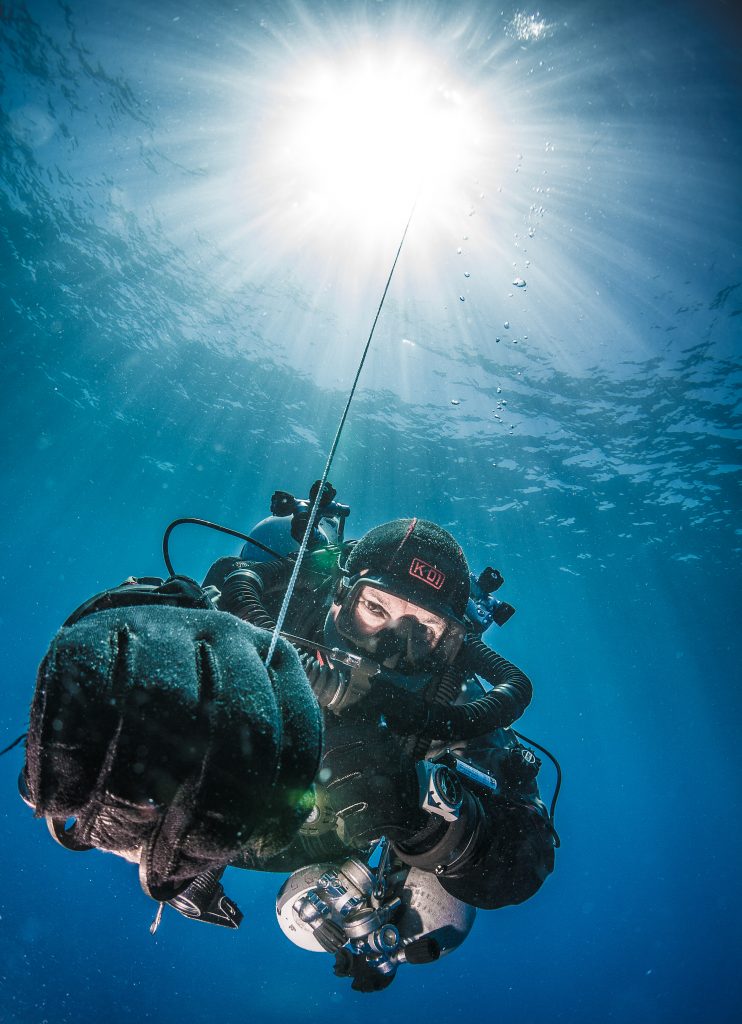
Eric Albinsson
Instructor Development Programs Specialist, PADI Americas
“The author’s rationale for avoiding Valsalva as a means to lessen the risk of DCO in cases where the diver has a PFO seems to make sense given how forceful the procedure actually is (can be) relative to other techniques. Even DAN states that with Valsalva there’s risk of other injuries occurring—See Beat the Squeeze: Equalize Like a Pro
In my view, everyone can benefit from transitioning from Valsalva to Frenzel, or similar technique, simply because not only is it generally easier to do regardless of head orientation, but it’s generally viewed as gentler on the ears and as divers, whether tech, rec, freediver or airplane flyers, we should be as gentle as possible on our ears if we want to keep diving as much as possible. I also found this WebMD page that alleges the gentler aspect of Frenzel. May your ears, mask and visibility always be clear.”
Kirk Krack
Performance Freediving Academy CEO/Founder, Performance Freediving International President/Founder
“I agree with what Charly wrote. Frenzel is superior to Valsalva and has many benefits as described including the advantage regarding PFO’s. The main advantage is it provides superior pressure that’s more immediate without straining the chest wall and thereby compressing the heart as it is all conducted at the throat. Essential you’re compressing a volume of air the size of your thumb vs almost two gallons which helps create higher pressure. Think of a thee stage air compressor. The first stage is the low pressure (0-1500psi) and the piston is quite large and slow whereas the third stage (2500-3000) is quite large and fast.
Additionally, it’s somewhat simple to learn and I’d say most professional scuba divers naturally move to this type of equalization because the body will tend to find efficiency. For those that don’t use Frenzel it can be a short and simple online course.”
Steve Lewis
Training Director, RAID Inc.
“Bold statements but no citations except for the related DAN study on PFO, which doesn’t make the case. By all means use the Frenzel technique (I do at times) but not to circumvent dealing surgically with a hole in your heart.”
Ted Harty
Principal & Founder Immersion Freediving
“Frenzel is a superior equalizing method in every way. The only downside is that for the people that don’t naturally do it, it’s tricky to learn. If the tech diver or scuba diver has ZERO issues equalizing than I would just keep doing what they are doing, but I know lots of scuba divers have equalization issues, that would be fixed with switching to Frenzel but so few people in the scuba industry really understand the differences between the two. I honestly look at this article as yet even another reason to use Frenzel over Valsalva!”
Dive Deeper
EQUALIZATION:
DAN Europe: EqualEasy – Equalisation Awareness
DAN US Smart Guide to Ear Equalization: Beat the Squeeze: Equalize Like a Pro (Downloadable)
Instagram Live: EqualizationsTechniques from Ted Harty
YouTube: How to Frenzel Equalize: an equalisation tutorial from a Professional Freediver by Adam Stern
Go Freediving: The Definitive Guide to the Frenzel Technique – With Emma Farrell
Ted Harty’s Immersion Freediving OnLine Course: Make your equalizing problems a thing of the past.
FreeDive Passion (Dahab): Personal Coaching
PFOs AND DCI:
Journal of Applied Physiology: Patent foramen ovale and decompression sickness in sports divers (DAN Europe)
InDepth: Everything You Wanted To Know About PFOs and Decompression Illness
DAN.org: Patent Foramen Ovale (PFO) – Divers Alert Network
VerywellHealth.com (Discusses PFOs and Valsalva): The “Bubble Study” for Patent Foramen Ovale

Charly is a writer who’s originally from the UK but has been based in Dahab, Egypt for the past four years. She taught scuba diving for three years in Cyprus, Thailand, and Egypt before discovering her love of freediving. She still scuba dives for fun but these days she’s more focused on her freediving training. When she’s not in the water, diving, she’s on her laptop, writing about diving.
EXTRA:
Personal Coaching from a Professional Freediver | Dahab | Freedive Passion



















